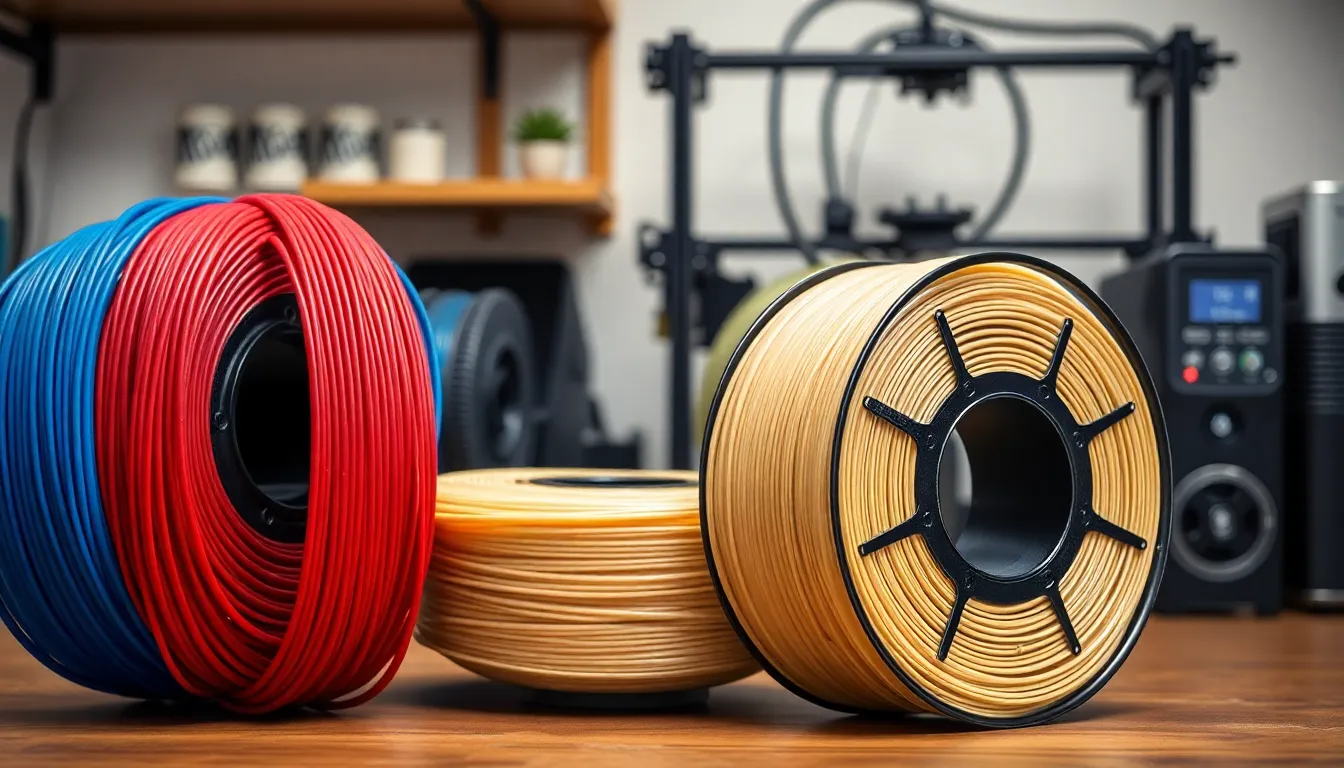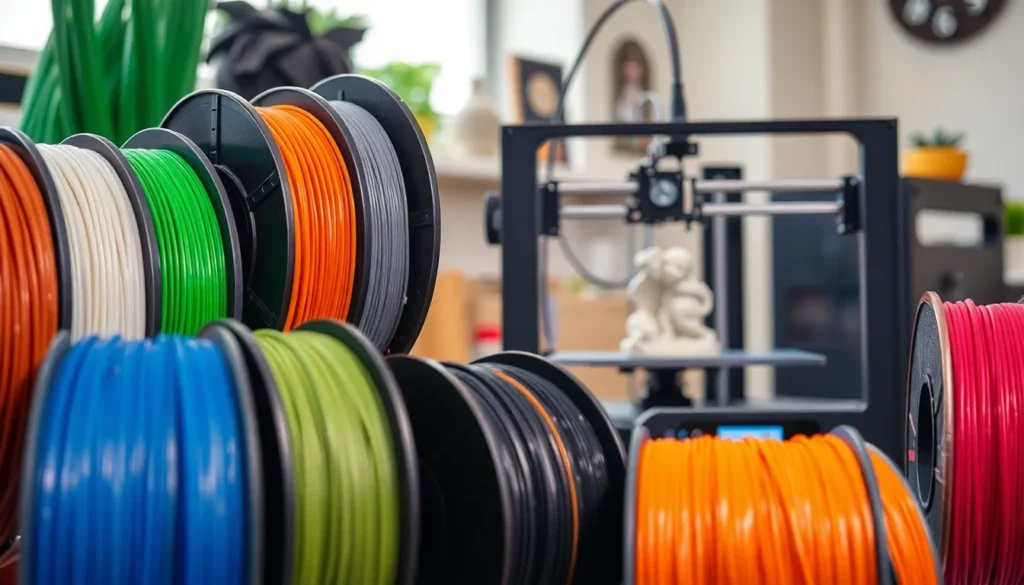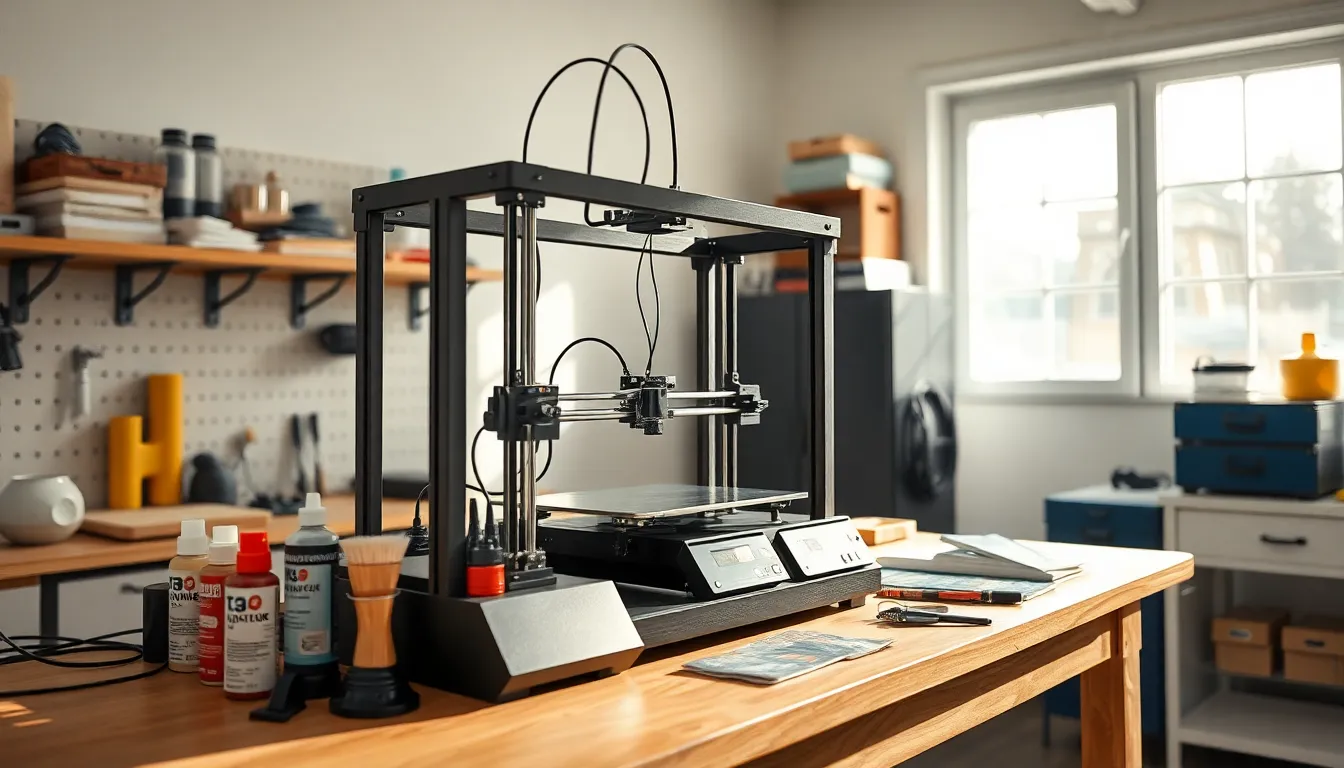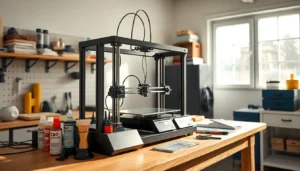In the world of 3D printing, filament is the unsung hero—think of it as the spaghetti to your printer’s meatballs. Without it, those amazing designs would just be a pile of dreams. Whether it’s PLA, ABS, or the exotic TPU, each type of filament has its quirks and qualities that can make or break a project.
Table of Contents
ToggleOverview Of 3D Printer Filament
3D printer filament serves as the essential material for creating three-dimensional objects. Various types of filament such as PLA, ABS, and TPU exist, each offering distinct advantages and disadvantages. PLA, a biodegradable plastic derived from cornstarch, provides ease of use and excellent detail. It produces low emissions and works well in environments with lower temperatures.
ABS, on the other hand, delivers higher strength and durability. This thermoplastic requires an enclosed printer to maintain ambient temperature, preventing warping. Its ability to withstand heat makes it suitable for functional parts and prototypes.
TPU is known for its flexibility and elasticity. It enables the production of rubber-like objects, which can withstand significant wear and tear. Users often favor it for applications like phone cases or flexible joints.
Exactly the type of filament selected can impact printing parameters, including temperature and speed settings. Each material demands specific printer configurations to achieve optimal results. Users must understand these differences when initiating a printing project.
Mechanical properties vary considerably between these filaments. For instance, PLA offers a rigidity that suits detailed models, while ABS’s toughness accommodates robust applications. A thorough knowledge of the filament properties can lead to improved print quality.
Scaling up a project can require different filaments based on the intended use of the printed items. Filament choice directly influences not just aesthetics but also the functional capabilities of the final product. Understanding these factors ensures successful outcomes in 3D printing endeavors.
Types Of 3D Printer Filament

Different types of filament significantly affect 3D printing results. Understanding these variations enhances project success.
PLA Filament
PLA stands for polylactic acid. This biodegradable filament derives from cornstarch, making it environmentally friendly. Users appreciate its ease of printing and vibrant color options. While it adheres well to the printing surface, cooling settings must be optimal to reduce warping. Excellent detail retention contributes to its popularity, especially for intricate designs. PLA remains suitable for lower temperature environments, allowing comfortable prints. It’s ideal for beginners due to its forgiving nature and minimal odor during printing.
ABS Filament
ABS, or acrylonitrile butadiene styrene, offers higher durability than PLA. It withstands higher temperatures, making it beneficial for functional components. Often, an enclosed printer is necessary to avoid warping during the cooling process. Mechanical strength and resilience make ABS preferable for prototypes and parts subject to impact. Printing with ABS requires ventilation, as fumes may be harmful. Various colors are available, but they might not achieve the same level of detail as PLA prints. Users should adjust temperature settings for optimal layer adhesion.
PETG Filament
PETG, or polyethylene terephthalate glycol, combines qualities from both PLA and ABS. This filament offers exceptional clarity and strength but retains some flexibility. Suitable for applications requiring chemical resistance, PETG prints are robust against impacts. It often adheres well to the build surface while reducing risks of warping. Print temperature settings should align with manufacturer specifications for the best results. Easy to work with, PETG produces minimal odor when printing. It serves well for functional parts, including mechanical components and everyday objects.
Selecting The Right 3D Printer Filament
Choosing the right filament significantly impacts the success of 3D printing projects. Various factors influence this decision, including material properties, intended use, and printer capabilities.
Considerations For Beginners
Beginners should prioritize ease of use when selecting filament. PLA stands out as the most user-friendly option, providing vivid colors and requiring lower printing temperatures. It’s less likely to warp, reducing the chances of printing failures. Ventilation and cooling settings are still important, yet they remain simpler with PLA. Checking compatibility with the specific printer model ensures a smoother experience. Many beginners find reliable resources online to guide filament selection and usage.
Advanced Considerations For Experts
Experts understand the nuances of filament characteristics and their impact on project requirements. ABS serves well for projects needing strength and resilience, but it requires proper ventilation due to fumes. Understanding specific temperature settings, like higher heat for ABS, enhances print quality. The advanced user often experiments with blends, such as PETG, which merges properties of PLA and ABS while offering clarity and strength. Tailoring print speed and layer height further optimizes the advantages of each filament type, contributing to superior results in intricate designs.
Best Brands For 3D Printer Filament
Numerous brands produce quality 3D printer filament, catering to diverse needs and budgets. Selecting the right brand can greatly influence printing outcomes and overall experience.
Budget-Friendly Options
Many companies provide affordable filament options without sacrificing quality. Hatchbox stands out for its reliable PLA and ABS filaments, making it a favorite among beginners. Overture offers a range of budget-friendly products, including PETG and PLA, known for consistent performance. Sunlu excels at delivering good value with its selection of filaments, ensuring easy availability and varied colors. These brands effectively balance price and quality, serving hobbyists and casual printers.
Premium Choices
Investing in premium filament often results in superior printing results. Prusa Research is renowned for its high-performance filaments, especially their Prusament line of PLA and PETG, favored by professionals. MatterHackers offers a vast array of premium options, including specialty filaments, that cater to advanced users seeking exceptional results. ColorFabb is recognized for its high-quality filament, such as their innovative composite and specialty blends. Selecting these brands elevates the printing process, ensuring durability and outstanding visual appeal in finished prints.
Conclusion
The choice of 3D printer filament plays a pivotal role in the success of any printing project. With options like PLA, ABS, and TPU, each filament type offers unique benefits that cater to different needs and skill levels. Beginners might find PLA’s ease of use appealing while advanced users can explore the complexities of ABS and other materials.
Understanding the properties of each filament allows users to tailor their printing parameters for optimal results. Additionally selecting the right brand can further enhance the printing experience. By making informed decisions about filament, users can transform their creative ideas into tangible products with ease and precision.










